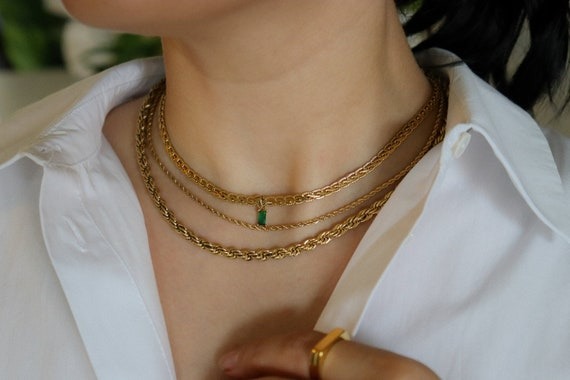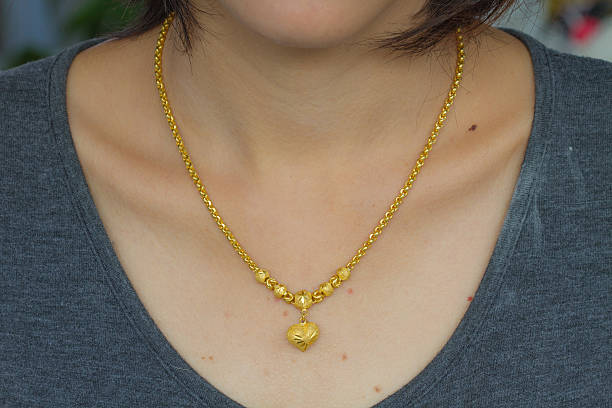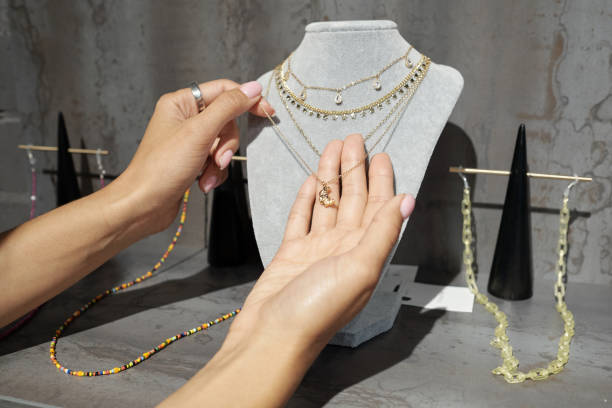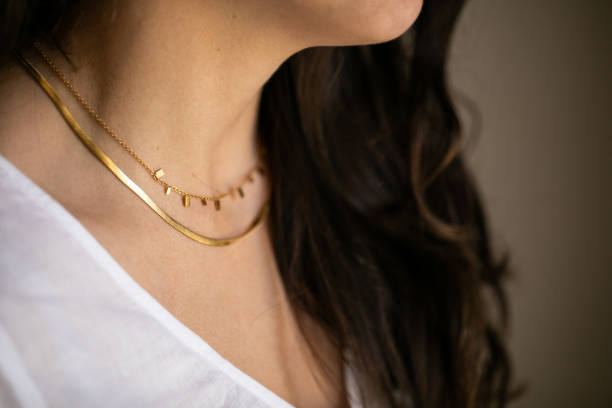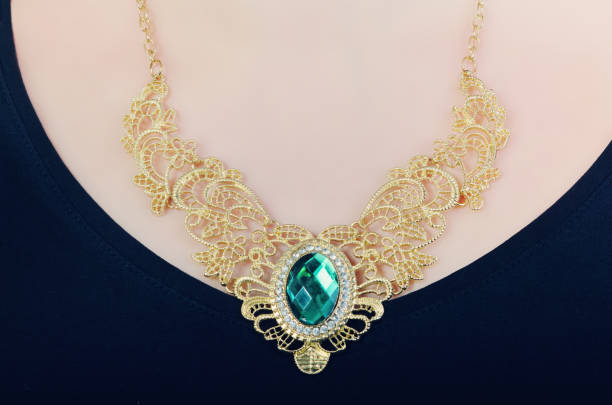This 18K gold necklace for women has literally taken over the market overnight among both the fashion-conscious and the health enthusiast. Ever thought why? Well, let’s plunge into rather an entertaining and an informative talk about the magic of 18k gold, and why it really is the best skin buddy.
What’s special with the 18k gold? It means that with regard to caratage, pure gold, or 24k, is too soft for wearing as such. Just envision a slung piece of butter around your neck-really, doesn’t quite work. In general, gold gets mixed with other metals in order to give it strength. 18k gold would contain 75% pure gold and 25% of a mix of added metals.

But here is the catch: it is those other metals that make the lower karat gold an allergen in the first place.
You see, metals like nickel can cause very nasty skin irritation, even at the lowly karat levels. Ever feel that itchiness or irritation coming from your jewelry? Yep, that’s probably nickel’s doing. On the other hand, 18k gold is much less likely to contain allergens and goes very gentle, even on sensitive skin.
Let me let something in for you: most people really think that gold-plated jewelry is all hypoallergenic. Not even close. Within a couple of usages, the thin layer of gold wears off, revealing base metals such as nickel. Imagine just how frustrating that should feel-like buying a designer handbag only to find that the label peeled off shows it was merely a cheap imitation.
You know it well if ever, after having worn a necklace, you were scratching your neck. In any case, my friend Emma had always had this weird rash after using jewelry, but one day-after trying many things in between-she tried an 18k gold necklace. What did happen? It didn’t freak her skin out, and she was happy. Bingo! The problem was solved! You know, kinda like when you realize drinking orange juice is really the thing that quiets your hangover.
The color of 18k gold is lusciously vivid. You know how sometimes some gold just looks a little washed out? That’s usually because the higher degrees of alloy metals dilute the richness within the gold. With 18k, you get a bolder hue that glimmers more passionately, riveting glaring eyes and hearts with its wholly valid gold appearance.
But let’s get real-you don’t want to feel bad about your aesthetic choices. And you shouldn’t. Another reason 18k gold is a win: it’s often how ethical jewelers can prefer to deal with higher-karat gold because of its purity. Less of the alloy metals involved can mean less mining impact on our precious Earth. So, basically, your choice doesn’t just make your skin happy, but it is one for Mother Nature, too.
Among those alloy metals are unsung heroes that give 18k gold its hypoallergic properties, such as palladium and platinum. Addition of these could help retain aesthetic appeal in a mixture without skin aggravation-just as cream in coffee smooths and enriches it with no bitter bite.
So, not all 18k golds are created equal, so to say; their exact composition does have some leeway. Some may still contain residues from irritative metals, although in minute quantities. If you’re supersensitive, it is always better to ask your jeweler what the specific metal mix is. A little due diligence will work wonders in keeping itch-causing annoyance at bay.
How to wear an 18K gold chain without being allergic.
Now, on to the glam world of trinkets-all that glitters. In particular, this glittery 18K gold necklace which women will just die for. Fabulous, isn’t it? Well, there is just one catch-allergies. What a real pain in the neck, no pun intended. If you happen to be allergic to rashes or itchiness, finding the right bling is a bit like finding treasure.
Now, let’s get creative on how you can still wear that beautiful 18K gold necklace without turning into an itching monster.
Check the Content of Gold and Alloy
With 18K gold, you’d think it was pure enough not to give any skin drama, right? It still contains 6 parts mix of other metals. These, after all, are the instigators of sensitive skin. Many times, it’s not the gold causing the problem but nickel or other alloys. Always find out if nickel forms a component in the necklace. Nickel-free ones, after all, will be most harmless to most of them.
The Use of Hypoallergenic Coatings
And that is a reason for some ingenious spirits to invent hypoallergenic varnishing. They just make an extra layer between your skin and metal. Kind of like your necklace is wearing a raincoat-so it keeps all those allergens off your skin. Sometimes, hypo-allergic varnishes are available from the selling store. Like an extra insurance on skin-handy, eh?
### Keep It Clean Would you wear the same clothes for months without washing? Yeah, neither. Necklaces just sort of build up this reservoir of sweat and grime and all forms of grossness over time. Cleaning cuts down on the number of possible skin irritants. Use a mild soap solution and a soft brush, or you know those fancy ultrasonic cleaners-magic, pure magic!
### Moisturize Your Skin
Ever notice that flare-ups seem worse when skin is dry? Slather some fragrance-free moisturizer underneath your necklace. Healthier, better-moisturized skin is more intact, and protects better against allergens. Allow the lotion to take its time getting absorbed in before jewelry is applied.
### Limit Wear Time
If dipping one’s toes into water, not being fully in, wear your 18k gold necklace for shorter lengths of time, working your way up as your skin acclimatizes. More like the slow-and-steady approach-minimizes risks of reaction and keeps one comfortable.
### Patch Test New Pieces
Take this for a spin: Wear that new necklace on your wrist for a day-say, like taking a car on a test ride. If the skin starts getting all tantrum-y, well, at least it’s only your neck that has to go through that hell. And if no drama ensues, voila!
Rotate Your Necklaces
Variety is the spice of life. Switch up your bling. It gives your skin a rest, and won’t let it always be at one block amount of time with the same set of metals. Plus, it keeps your look new and interesting. Two birds with one stone! Be extra conscious about clasps and chains.
Sometimes even the chain and clasps alone may cause more skin friction than the pendant itself. For this reason, go for clasps that are smooth and rounded. Softened chains or those with fabric inserts will further prevent irritation. As for uncomfortable fittings, well, there is no need to put up with them.
### Consult a Dermatologist When your skin problems drive you nuts, your best friend should be a dermatologist. He will advise you on many personal things and help you find the right treatments. What is more important than professional advice when one gets desperate?
